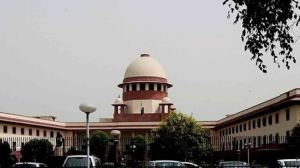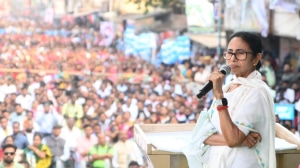Violent undercurrents
Fifteen years ago I was walking towards the old Campa Cola factory off Connaught Place when I heard a car honking behind another which did...

Fifteen years ago I was walking towards the old Campa Cola factory off Connaught Place when I heard a car honking behind another which didn’t give way. Presently, both cars came to a stop and I saw a man in a rage emerge from the rear vehicle and pull out a pistol from a rexine bag. He was shaking with fury. No shooting occurred, but the incident reinforced my view that Delhi has a strong undercurrent of violence.
It wasn’t like that before 1947 when Delhi retained a flavour of its resplendent past as the seat of the Mughal empire. With Muslims forming one-third of Delhi’s population, the city was suave and urbane with qawaalis ringing out from the homes of the wealthy. Partition changed all that. As lakhs of refugees swarmed into Delhi, half of the city’s residents left for Pakistan. Delhi’s demographic profile changed permanently. The change in the city’s population changed its culture.
Desperate refugees do anything for survival. The ones who straggled into Delhi stormed into and occupied the homes and shops of old-time residents. Other refugees became roadside peddlers with their women washing dishes to keep the family afloat. As a community, they were filled with hate for a random fate that made them homeless. Aggression became their chief characteristic, prompting a Peoples of India report to comment years later that post-Partition Delhi had acquired the “socio-cultural system of the north-west”.
Delhi’s refugee families, of course, have risen to dominate its commercial life. But the culture of aggression they brought survives. The culture is evident from the way a honking bus bears down on you. It’s evident from the private bus conductor banging the side of the bus to warn people off its path. In fact, my abiding image of Delhi is of a muscular man with a stubble chewing a stick of cane at a bus-stop. A bus comes, he lunges, scattering women and kids, and he’s inside, still gnawing at his stick of cane. Rightly so, people of Mumbai, Calcutta and Chennai consider Delhi a city of ruffians.
Four years ago I entered the India Gate roundabout, a VVIP zone, when I saw a bus pressing a hapless autorickshaw into the kerb. Sitting on the right side of the bus driver was his buddy with the bulging muscles of a body-builder. Having stopped the auto, the muscleman jumped down, gave the cowering auto-driver four-five hard blows before climbing into the bus which drove off. Another time, near the famous Nizamuddin mosque, I saw two maniacs virtually “playing chicken”, a lethal American game where two motorists race towards each other till the "loser" veers away from a collision.
In this episode, one motorist racing with another, but falling behind, swerved into the other’s path, averting a crash by inches. He was willing to have his car smashed to deny victory to the other fellow.
Perhaps Delhi’s murderous heat promotes violence. I’ve travelled in Mumbai’s suburban trains which are so jam-packed that a commuter holding a leather strap ahead cannot bring his hand down due to the crush of bodies. But never once did I see people exchange a harsh word. Maybe Mumbai people are calmed by the ocean lapping on their shores. An equable coastal climate promotes equanimity. Unfortunately for Delhi, its murderously hot summer months contribute to its frontier violence.
Also influencing Delhi are the states which surround it. Every few months in Haryana or the Jat-dominated western UP, we hear of a village panchayat lynching a Jat boy and Harijan girl for eloping. The lynchings enjoy local sanction. How can near-by Delhi remain immune to the primeval furies of its hinterland?





- 01
- 02
- 03
- 04
- 05


























